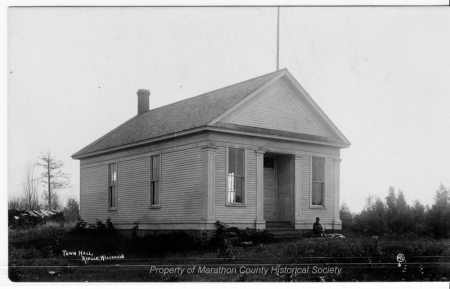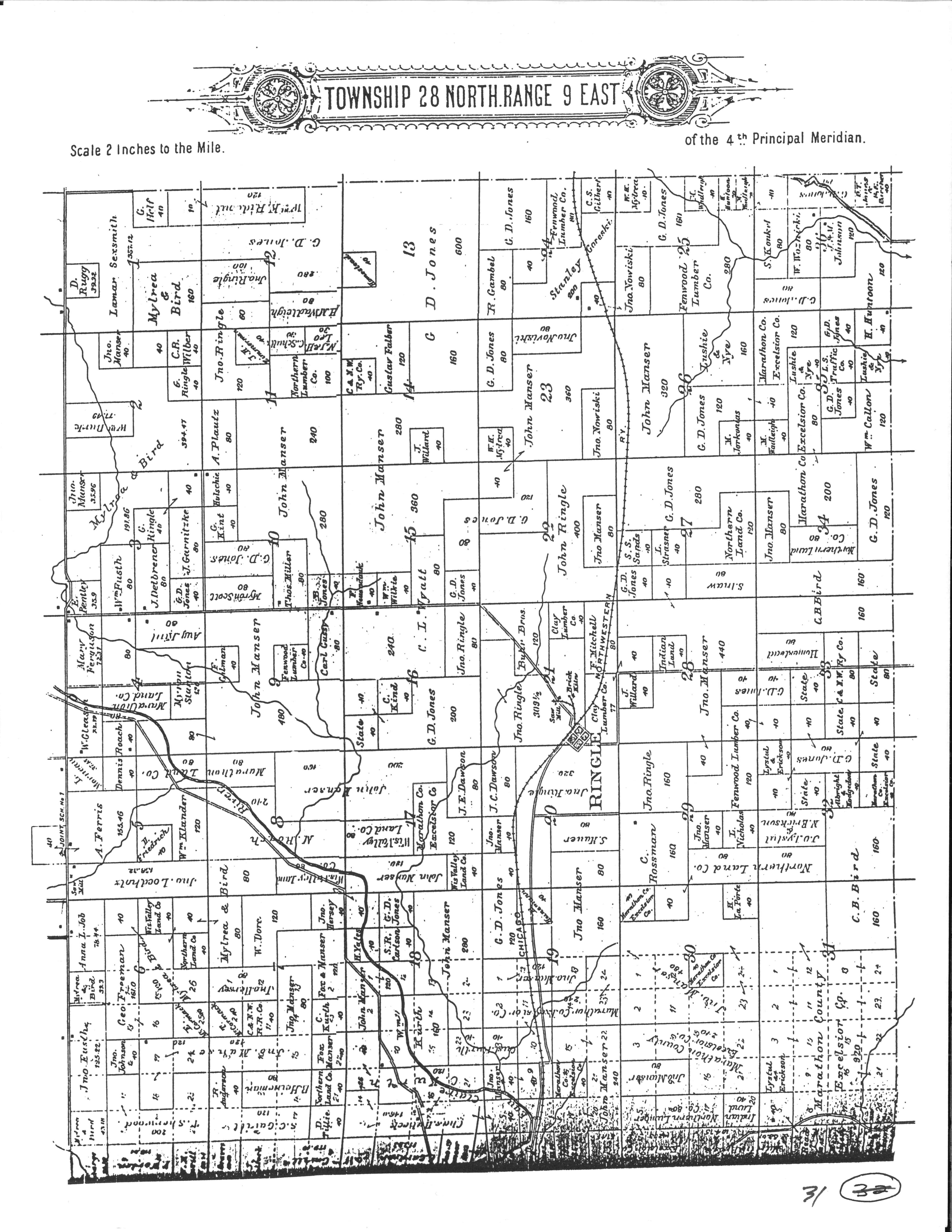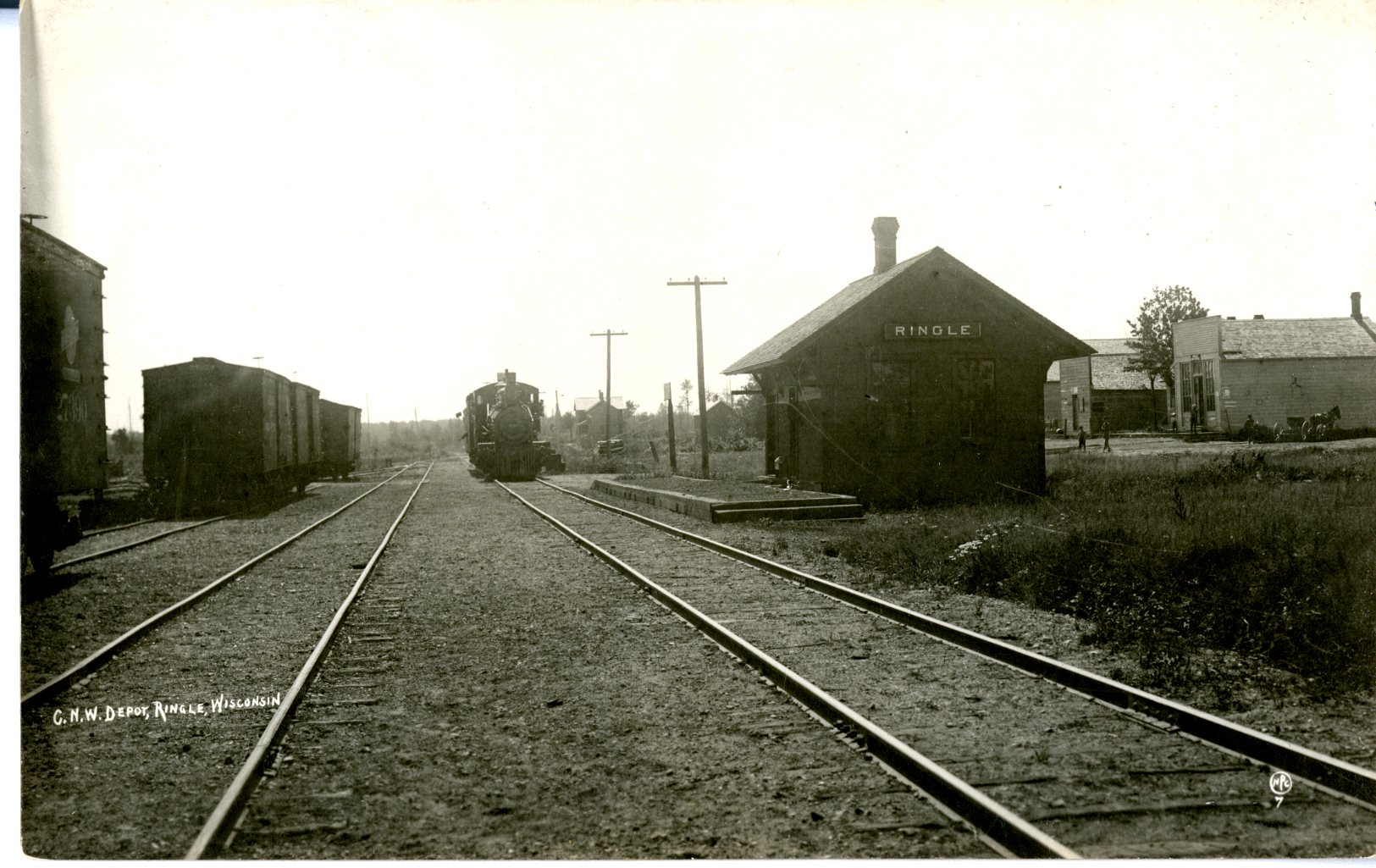Search our Places Database
Ringle, Township of
Return To List of Locations | Back to Search
For more information on this location, please contact our research library.

Author:
Mary Moltzan
Location:
T. 28 N. - R. 9 E.
Founded:
January 9, 1901
Formallized:
Spring 1901
Background:
Population: 1905-425, 2000-1408
The earliest settlers were Dutch, followed by Norwegians, Germans and Poles.
The Town of Ringle was named after Wausau Mayor John Ringle, an offspring of the prominent Ringle family who pioneered the area, making major contributions to the civic growth of Wausau and Marathon County. In addition to serving as Wausau's mayor and several other public offices, John Ringle built and ran the Ringle Brick Company.
First Public Official:
C. L. Wyatt
Biography:
First President
Post Office Established:
August 28, 1891
First Postmaster:
Ruth A. Abbott
About The Post Office:
Located in the SW 1/4 Section 21 in Ringle Township, the PO is still in service.
Railroad:
The Chicago and NorthWestern ran east and west through the township with a depot in the Village of Ringle. A side track ran into the yard of the Ringle Brick Company to facilitate shipping.
Churches:
There were no early churches, but there were at least two missions visited by ministers from other towns.
Schools:
1. Dist #4, Carpenter School in Section 10, according to the 1943 Marathon County Schools map.
2. There were two schools, located in Sections 3 and 21, according to the 1913 plat map.
Business:
See Village of Ringle
Industry:
Sawmills.
Ringle Brick Company. It was John Ringle's intent to build a sawmill, which he did in 1889, but clay found on the property encouraged diversification. Discovery of a 30 ft. thick deposit of clay led to the closing of the sawmill in 1904. Beneath the clay was hard shale which Ringle pulverized into powder and mixed with the clay. Iron oxide in the shale gave the brick a burnt orange color after firing. Due to the firing of the bricks, there was intense heat, and the brickyard burned down twice and was rebuilt. The final Ringle brick was produced in 1943.
Farming:
Farmers worked at the brickyard and sawmills. Operations at the brickyard and sawmills had to be adjusted so farmers could come to work after 8 a.m. In addition, the plant had to close between 4 and 5 p.m. so the farmers could return home for milking.
Stories:
Children from the age of five on walked to school, often carrying their lunches in a lard pail, which often froze on the way to school in the winter. The teacher was expected to get to school early and build a fire in the woodstove so that by classtime, the school house would, at least for those sitting near the woodstove, be warm. One by one, as students would file in, they would place their frozen lunch pails next to the woodstove to hopefully thaw by lunch.





